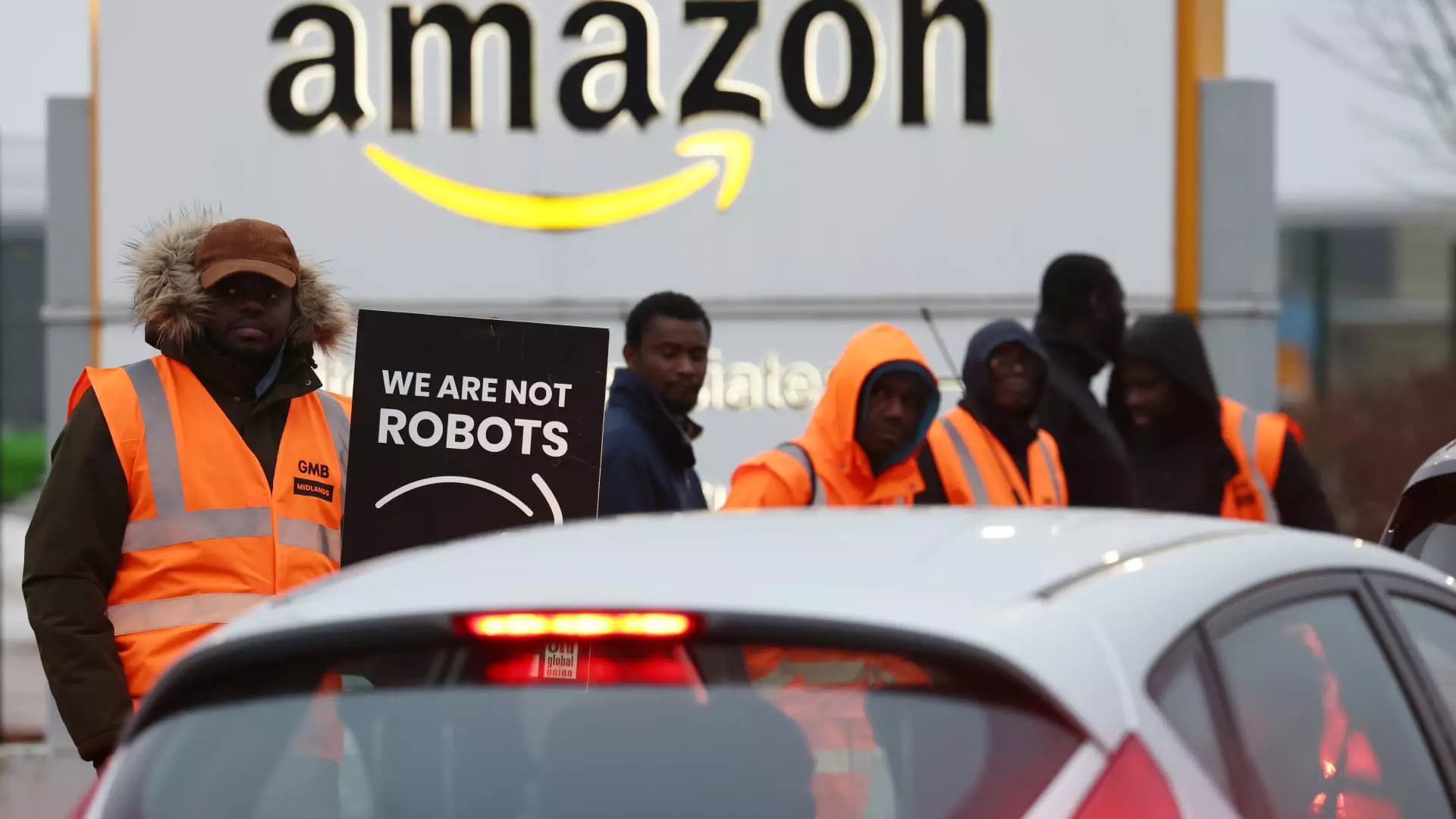In recent years, corporations like Amazon have heralded their investments in automation as indicators of innovation and efficiency. The announcement of their one-millionth robot and the deployment of advanced AI models such as “DeepFleet” seems to position the company firmly at the forefront of modern logistics. Yet, beneath this veneer of technological progress lies a stark reality: the erosion of meaningful employment opportunities. While such advancements are championed as boosting productivity, they often serve as a façade that obfuscates the profound socio-economic costs—costs that threaten to destabilize the job market and widen income disparities.
Contrary to the narrative of progress, these moves foster a climate where human workers are increasingly viewed as expendable components rather than valuable assets. Amazon’s portrayal of robots as complementary workers—handling heavy lifting and repetitive tasks—ignores a deeper truth. The displacement of human labor, especially in manufacturing and warehouse sectors, is not merely a side effect but a core objective of deploying automation at such scale. The promised “augmented” workplace often devolves into one where human roles become subordinate, marginalized, or altogether redundant. As these machines become more prevalent, the danger of a growing unemployment crisis hangs over the working class like a dark cloud.
The Pitfall of Perceived Progress and the Role of Leadership
Amazon’s leadership, exemplified by Scott Dresser and CEO Andy Jassy, attempts to frame automation as beneficial—highlighting new opportunities for employees in maintenance and engineering roles and emphasizing the creation of technical skills. However, this narrative is idealistic at best. When the CEO openly states that AI will lead to “fewer people doing some of the jobs,” it reveals an uncomfortable truth: that automation’s primary motivation is cost reduction, not worker empowerment.
The disconnect between corporate rhetoric and economic reality becomes more evident when considering the recent layoffs. The loss of over 27,000 jobs in two years signals an alarming trend—one where technological efficiency is prioritized over stable employment. Such figures suggest a future where, despite claims of “opportunities,” the overall workforce diminishes, leaving millions vulnerable to job insecurity. Leadership’s optimistic spin often fails to address the societal repercussions of this shift, instead choosing to highlight only the purported benefits without grappling with the human cost.
The Myth of Balance: Productivity Gains at the Expense of Society
Proponents argue that automation allows for faster, more cost-effective services—like Amazon’s promise of quicker deliveries and operational savings. This is undeniable; however, the broader implications reveal a troubling imbalance. The relentless pursuit of efficiency disregards the social fabric that sustains communities dependent on stable employment. The promise that AI and robotics will “create new opportunities” assumes a seamless transition—something not reflected in reality.
As industries rapidly adopt AI-driven solutions, a pattern emerges: layoffs mount, and job markets tighten. The layoffs tracked by Layoffs.fyi underscore this trend, with hundreds of thousands of workers losing their jobs due to the virus of automation. The narrative of technological progress becomes a double-edged sword, where innovation enriches corporate coffers but impoverishes the workforce. It questions whether economic growth achieved at the expense of millions of livelihoods can be justified or if society should re-evaluate its priorities.
A Critical Perspective on the Future of Work
From a center-right liberal perspective, the situation presents a complex dilemma. On one hand, technological advancements are essential for national competitiveness and economic vitality. On the other, an unchecked rush toward automation without adequate safeguards risks deepening social inequality. It’s paramount that policies are implemented to ensure that technological gains translate into shared prosperity rather than concentrated wealth and mass unemployment.
Regulation should aim to strike a balance—encouraging innovation while protecting workers’ rights and livelihoods. Companies like Amazon should be held accountable for their broader societal responsibilities. This entails investing not only in AI and robotics but also in reskilling programs, transitional support, and policies that mitigate the harm caused by automation. Otherwise, the relentless march of machines may transform the economy into a winner-takes-all arena, eroding social cohesion and widening the gulf between the wealthy and the working class.
By critically examining the narrative of progress, it becomes clear that the true cost of automation often goes unseen. The promise of efficiency and innovation must be weighed against the potential for social dislocation. If society fails to address these issues proactively, the spectacle of corporate technological triumph may result in a future defined not by human achievement, but by widespread economic despair.

